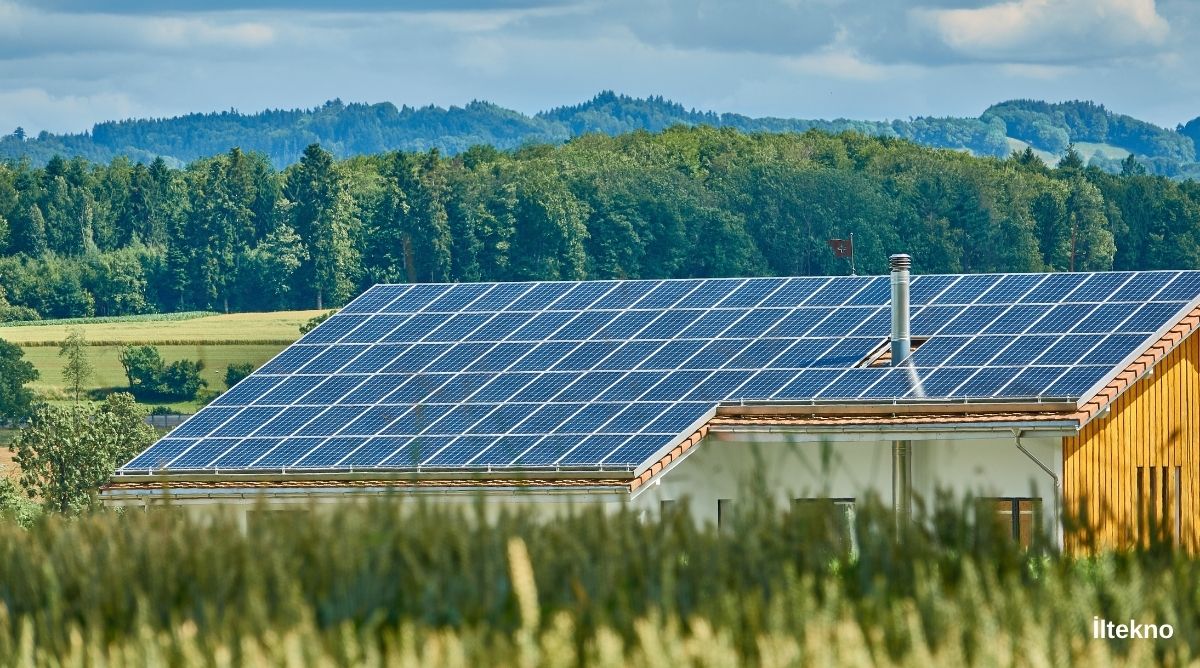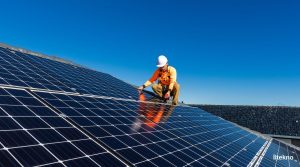Solar energy is a clean, renewable, and cost-effective way to power homes. With rising electricity costs and increasing awareness of environmental sustainability, more homeowners are turning to solar power. This guide provides an in-depth look at how solar energy systems work, their benefits, costs, and how to choose the right system for your home.
For more information and consultation, contact us.
1. How Do Solar Energy Systems Work?
A residential solar power system converts sunlight into electricity using photovoltaic (PV) panels. The key components of a solar system include:
- Solar Panels: Capture sunlight and convert it into DC (direct current) electricity.
- Inverter: Converts DC electricity into AC (alternating current), which is used in homes.
- Battery Storage (Optional): Stores excess electricity for later use.
- Mounting System: Holds the solar panels securely in place.
- Net Metering System (For Grid-Tied Systems): Allows homeowners to sell excess energy back to the grid.
2. Advantages and Disadvantages of Home Solar Energy
✅ Advantages
✔ Lower Electricity Bills: Generate your own electricity and reduce dependence on the grid.
✔ Eco-Friendly: Reduces carbon footprint and reliance on fossil fuels.
✔ Minimal Maintenance: Solar panels last for decades with little maintenance.
✔ Energy Independence: Protects against rising electricity prices and power outages.
❌ Disadvantages
✖ High Initial Cost: Installing a solar system requires a significant upfront investment.
✖ Weather-Dependent: Efficiency varies based on sunlight availability.
✖ Space Requirements: Larger systems need more roof space or land.
3. Types of Solar Energy Systems
🔹 Grid-Tied (On-Grid) Systems
- Connected to the public electricity grid.
- Excess energy can be sold back to the utility company (net metering).
- No battery storage required.
- Does not work during power outages unless paired with a backup battery.
🔹 Off-Grid Systems
- Completely independent from the electricity grid.
- Requires battery storage to provide power at night or during cloudy days.
- Suitable for remote locations without grid access.
- More expensive due to battery costs.
🔹 Hybrid Systems
- Combines features of both on-grid and off-grid systems.
- Uses batteries for backup while remaining connected to the grid.
- Offers flexibility and resilience against power failures.

4. Key Considerations Before Installing Solar Panels
✔ Roof Suitability & Orientation:
- South-facing roofs (in the Northern Hemisphere) provide the best efficiency.
- Ensure the roof is in good condition before installation.
✔ Energy Consumption Analysis:
- Check your average monthly energy usage (measured in kilowatt-hours, kWh).
- A typical household consumes between 8,000 - 15,000 kWh per year, depending on location and lifestyle.
✔ Budget Planning & Incentives:
- Compare costs, including panel prices, installation, inverters, and batteries.
- Check for government incentives, tax credits, and financing options available in your country.
✔ Choose a Reputable Installer:
- Research solar providers, read customer reviews, and compare warranties.
- Ensure the company is certified and experienced in solar installations.
5. Solar Panel Lifespan & Maintenance
Solar panels are built to last 25-30 years with minimal maintenance. Here’s how to keep them efficient:
- Regular Cleaning: Dust and dirt can reduce efficiency, so clean panels periodically.
- Check for Shade Issues: Nearby trees or structures may create shadows that reduce energy production.
- Inspect System Performance: Use monitoring apps provided by solar installers to track energy output.
6. How Much Can You Save with Solar Energy?
The amount of savings depends on several factors:
- Electricity Rates: Higher energy prices lead to faster returns on investment.
- System Size & Efficiency: Larger, high-efficiency panels generate more power.
- Location & Sunlight Availability: More sunlight means greater energy production.
A well-designed system can pay for itself in 5-8 years, depending on local energy costs and government incentives. Over its lifetime, a solar system can save homeowners tens of thousands of dollars in electricity bills.
7. Global Solar Energy Incentives & Tax Benefits
Many governments offer incentives to promote solar adoption:
✅ Tax Credits & Rebates – Some countries offer tax reductions for solar installations.
✅ Net Metering Programs – Sell excess solar energy back to the grid.
✅ Low-Interest Solar Loans – Special financing options for homeowners investing in solar power.
To maximize savings, research available incentives in your country or state.
Switching to solar energy is a long-term investment that offers environmental and financial benefits. With proper planning and installation, homeowners can significantly reduce electricity costs and contribute to a sustainable future.
If you're considering installing solar panels, consult with a professional solar provider to determine the best system for your home. 🌞🏡
For more information and consultation, contact us.



